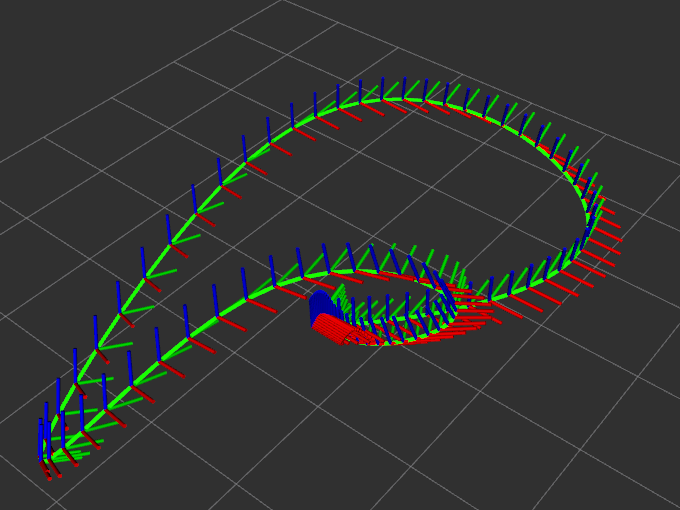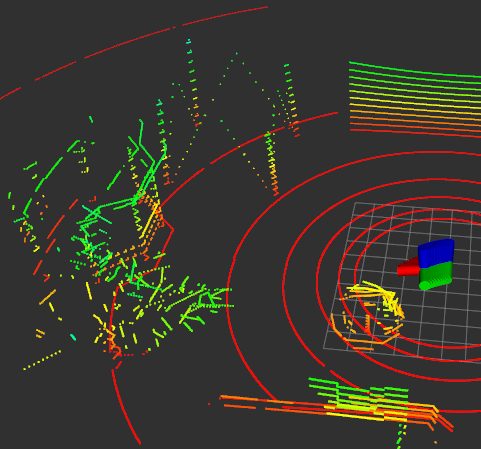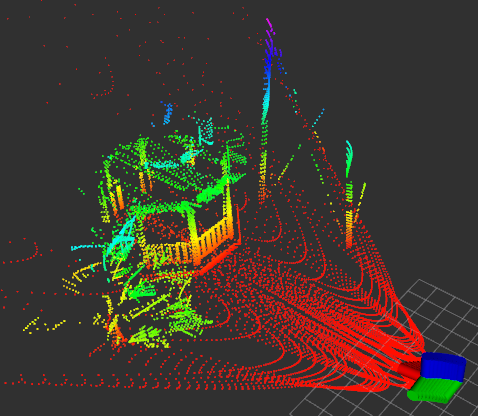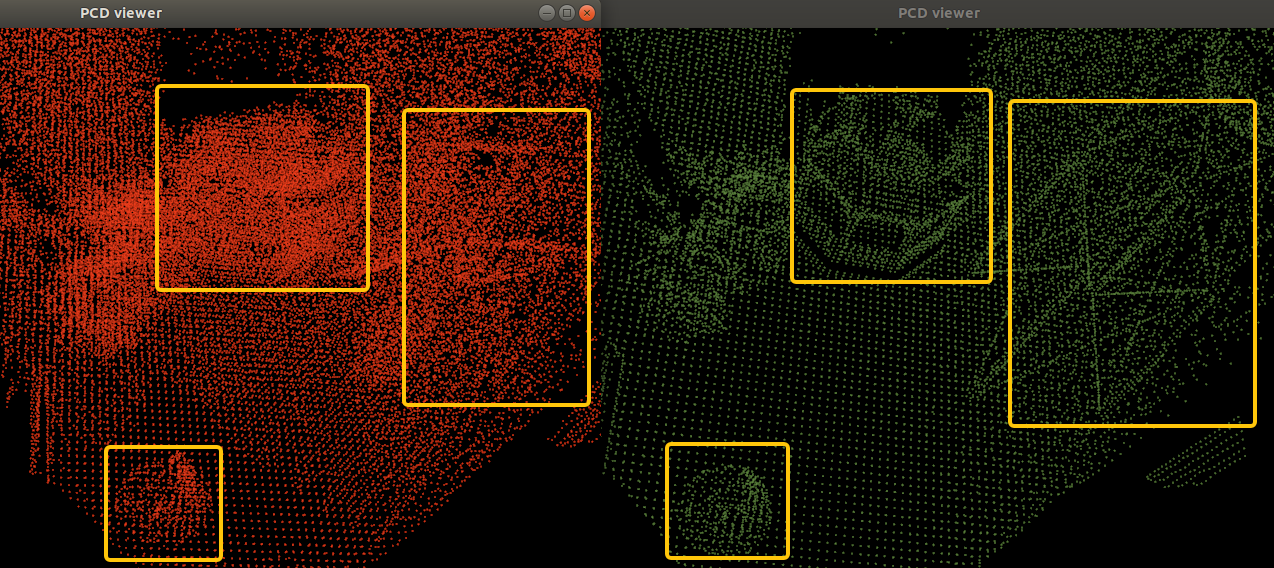Usually, LiDAR plugins based on Gazebo adopt the method of collecting one frame of point clouds at the same timestamp. While such method is fast, it has many drawbacks:
- not adhere to the working principles of LiDAR
- each point cloud does not come with a timestamp
- unable to simulate real motion distortions
This repository implements a point cloud acquisition tool that faithfully follows the actual operation of a LiDAR. It involves two steps:
-
Customizing spline motion trajectories, which allows customization of spline trajectories for arbitrary rapid movements.
-
Ray casting and point cloud acquisition, writing into rosbag.
- Ubuntu18.04 is tested
- ROS melodic is tested
- Gazebo9 is tested
- PCL Library
path_dir is where you save traj file, format is same as [3].
# time, x(m), y(m), z(m), roll(deg), pitch(deg), yaw(deg)
0, 0, 0, 1, 0, 0, 0
1, 0.1, 0.03, 1.2, 10, 8, 10
2, 0.4, 0.2, 0.9, 2, -9, 30
3, 1.0, 0.5, 1.5, 15, -17, 17
4, -0.4, -0.3, 1.3, -5, -5, 5
5, -1.0, -2.0, 0.6, -20, -25, -20
6, -2.0, 1.3, 0.9, -3, -3, -5
8, 1.3, 2.0, 1.4, 13, 10, 10
10, 0, 0, 1, 0, 0, 0First column is time scale factor, not the real time.
Then you can visual your traj by show_path.launch.
<node name="show_path" pkg="sdpc" type="show_path" output="screen">
<param name="total_time" value="10" /> // total sim time
<param name="dt" value="0.1" /> // time step for frame to draw
<param name="path_fn" value="$(find sdpc)/path_dir/path_test.txt" /> // spline knots file
</node>roslaunch sdpc show_path.launchYou will see:
Config file run.launch and lidar.xacro.
<arg name="world_name" value="trees" />
<param name="total_time" type="double" value="10.0" />
<param name="path_fn" type="string" value="$(find sdpc)/path_dir/path_test.txt" />
<param name="save_bag" type="string" value="$(find sdpc)/bag/dist.bag" />
<param name="lidar_topic" type="string" value="lidar_points" />
<param name="lidar_type" type="string" value="velodyne" />
<param name="save_pcd" type="bool" value="true"/>
<param name="pcd_dir" type="string" value="$(find sdpc)/pcd/"/>For now only support velodyne
<plugin name="dpc_lidar" filename="libsdpc.so">
<ray>
<scan>
<horizontal>
<!-- when use velodyne -->
<samples>1800</samples>
<!-- when use avia -->
<!-- <samples>24000</samples> -->
<resolution>1</resolution>
<min_angle>0</min_angle>
<max_angle>360</max_angle>
</horizontal>
<vertical>
<samples>16</samples>
<resolution>1</resolution>
<min_angle>-15</min_angle>
<max_angle>15</max_angle>
</vertical>
</scan>
<range>
<min>0.2</min>
<max>100</max>
<resolution>1</resolution>
</range>
<noise>
<type>gaussian</type>
<mean>0</mean>
<stddev>1e-6</stddev>
</noise>
</ray>
<visualize>false</visualize>
<hz>10</hz>
<downsample>1</downsample>
</plugin>
Then you can run:
roslaunch sdpc run.launch
see launch/vis_bag.launch:
<node name="vis_bag" pkg="sdpc" type="vis_bag" output="screen" >
<param name="N_SCANS" value="6" />
<!-- specify your bag generated by the program -->
<param name="bag_fn" value="$(find sdpc)/bag/avia.bag" />
</node>roslaunch sdpc vis_bag.launchCompared to Lips[3], as far as i know has same function as SDPC, it acquires one frame velodye 16*1800 pointclouds cost 12s with 10 planes. But SDPC does not limit to plane scenarios, and 10x times faster!!
Code references to [1-5] and adapts from [2-3]. Thanks to the open source.
- Livox support(Avia, Mid360)
Avia mapping:
- IMU support
- FastLIO/PointLIO demo
- GPU support, long way to go!
[1] https://github.com/lmark1/velodyne_simulator
[2] https://github.com/lvfengchi/livox_laser_simulation
[3] https://github.com/rpng/lips




